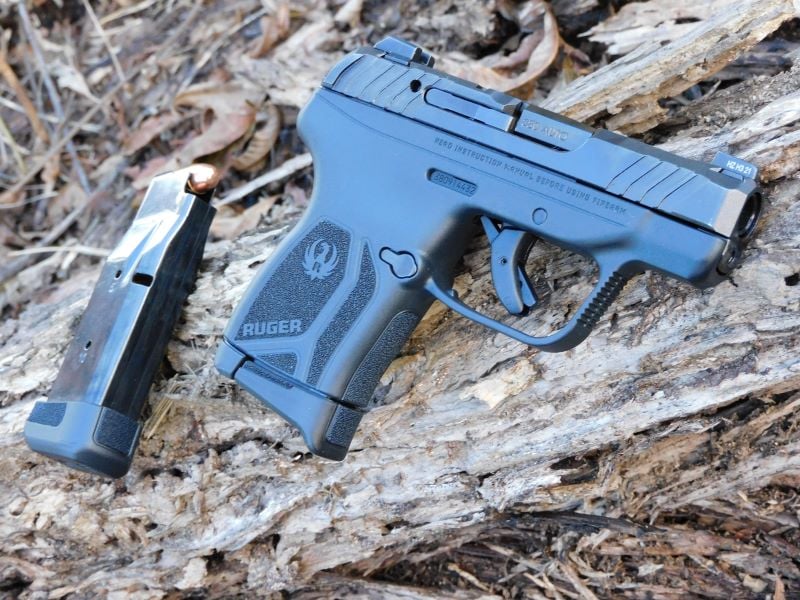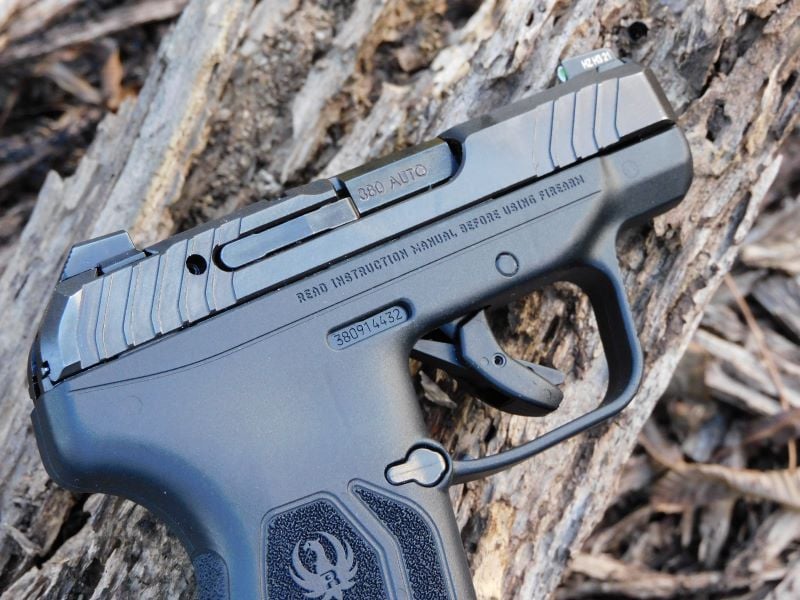If you are looking for a 380 pistol for concealed carry, chances are the most common handgun you are apt to find is a small, polymer-framed pocket pistol. The Ruger LCP and the Smith & Wesson Bodyguard are ubiquitous, but they are merely the vanguard to a genre that is downright prolific, never mind the middling power usually assigned to the 380 ACP cartridge. The biggest problem with these models on paper is their lack of capacity—usually 6 or 7 rounds. Getting a 380 with higher capacity often means trading up to a larger, metal-framed handgun if one could be found.
When Sig Sauer produced a 9mm pistol with a higher capacity in the form of the P365 pistol, a number of firms jumped on the bandwagon. Ruger, who brought the 380 into the mainstream with their original LCP in 2008, sought to do the same when they introduced the LCP Max in 2021. I have an old LCP with a high round count that I swear by. It is a great pocket pistol. I was unimpressed by the higher sights and short trigger of the subsequent LCP II. But when the Max came out, boasting a capacity of 10-12 rounds, I was willing to lay down the cash and give it a whirl.

LCP Max Features
When viewed on the firing line, the LCP Max has a similar footprint comparable to other pocket 380s. Cosmetically, it looks like an ordinary 6-shot Ruger LCP II with the same matte-finished slide with cocking serrations at the rear and near the muzzle. It has the same squared-off trigger guard, bladed trigger safety, and the same skateboard-tape-like texture imparted to the polymer grip frame. Likewise, the Max is still a single-action, hammer-fired 380 sporting a short 2.75-inch barrel. The Max also borrows an LCP II-like slide stop and magazine release on the left side of the post. It will even fit in the same holsters as an LCP II.

But once you take the Max in hand, the differences are magnified. The grip is a bit wider than the LCP II and the original LCP. Curious, I broke out my LCP and miked the grips out to .77 inches wide. The LCP’s overall height is 3.6 inches tall. The Max’s grip is taller and wider, increasing the height dimension to 4.1 inches and .93 inches respectively. The slide width on both handguns is 3/4 of an inch. Unloaded, the two are indistinguishable but fully loaded the old LCP weighs in at 12 ounces. The Max weighs 14.3 ounces, but with mags loaded with 10 or 12 rounds instead of 6.
Think of the Max as a slightly overweight version of its predecessors and you might not be far off. But the Max does incorporate a few features of its own. By far the best is Ruger’s decision to give the Max a set of high-visibility sights. The front sight has a green tritium insert that picks up well in low light. The rear sight is a blackened U-notch that is bobbed at the rear for an easy draw from the pocket, but vertical in the front for ease of racking the pistol. To back up the rear sight, Ruger machined a prominent cocking shelf at the very rear of the slide. Not exciting by duty pistol standards, but it is so for a pocket gun!

Like most Ruger pistols, the Max comes in a little cardboard box along with one 10-round magazine. After a quick cleaning, I ran out and bought a few more magazines, and took the Max for the first of too many range trips totaling approximately 1000 rounds downrange.
On The Range
After years of handling the jumpy recoil and long, double-action pull of the original Ruger LCP, it took a while to get used to the LCP Max. Both load essentially the same, though the Max’s 12-round extended magazines tended to be tight to load after the tenth round—at least at first. But the magazines were easy to seat without looking at the pistol. Negotiating a single stack magazine into the little LCP can be hit or miss at times. Likewise, there is little to hang onto when racking the slide to fully load the pistol. The Max’s slide is not any less stiff, but there is more to hang onto while you go to work. In fact, the Max’s steel rear sight is perfect for racking from the edge of a table if you have limited hand strength.
Shooting the Max felt more akin to shooting a larger-sized pistol, rather than a pocket gun. That additional grip height and width helped mitigate recoil, whereas those smaller single-stack guns often felt like the edge of a board hitting you in the web of the hand. The Max’s trigger is no lighter than LCP. It breaks at just under 6 pounds. But it is short and breaks cleanly and I was tempted to break my shots too early. I also had a tendency of putting too much finger on the trigger, which pinched my skin between the trigger and frame on occasion. But with practice, I was able to master the trigger, take some 7-yard groups, and even knock some steel plates out to 25 yards. Through several range sessions and only a cursory wipe down here and there, I did not have any malfunctions.

In terms of accuracy, the sights are probably the most significant limiting factor. They are phenomenal for a quick pick-up and shoot but are big if you like to shoot for groups. Even at 10 yards, the front sight tended to cover much of a bullseye target. Even so, accuracy was more than sufficient. I achieved my very best groups with Sig Sauer V-Crown 95-grain jacketed hollow points. Other types of ammunition achieved accuracy that was nearly comparable—although they did not always hit in the same place.
Accuracy
- Sig Sauer V-Crown 95 grain HP: 3.0 inch
- Hornady Critical Defense 90 grain FTX: 3.2 inch
- Barnes Tac 80 grain HP: 4.2 inch
- Ammo Inc. 95 grain HP: 3.8 inch
- PPU 95 grain FMJ: 3.3 inch
- Remington 95 grain FMJ: 5.0 inch
(7 shot groups taken at seven yards)

Parting Shots
When Ruger introduced their LCP or Lightweight Compact Pistol in 2008, it was not the first pocket pistol, nor the first truly-pocket worthy in 380 ACP. To put it bluntly, it was a refinement of the old Keltec P3AT with the appeal of a mainstream brand. Likewise, the Max isn’t the first small handgun that worked around the odd 1 1/2 stack magazines that offered higher capacity without the grip bulk of a double-stack. But when these and other refinements are brought back to a design that revolutionized the concealed carry market, we get the Ruger LCP Max — a handgun that pockets like the original but operates and shoots like a larger one with little perceived tradeoff.

